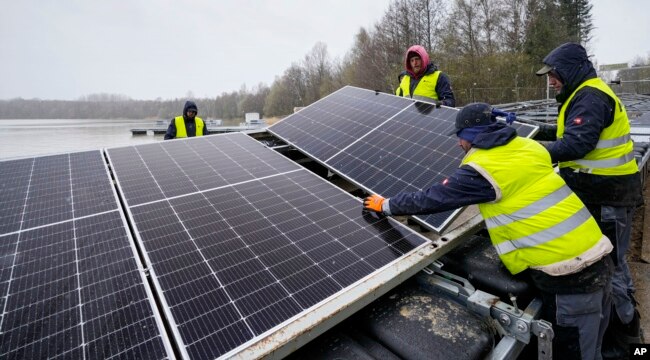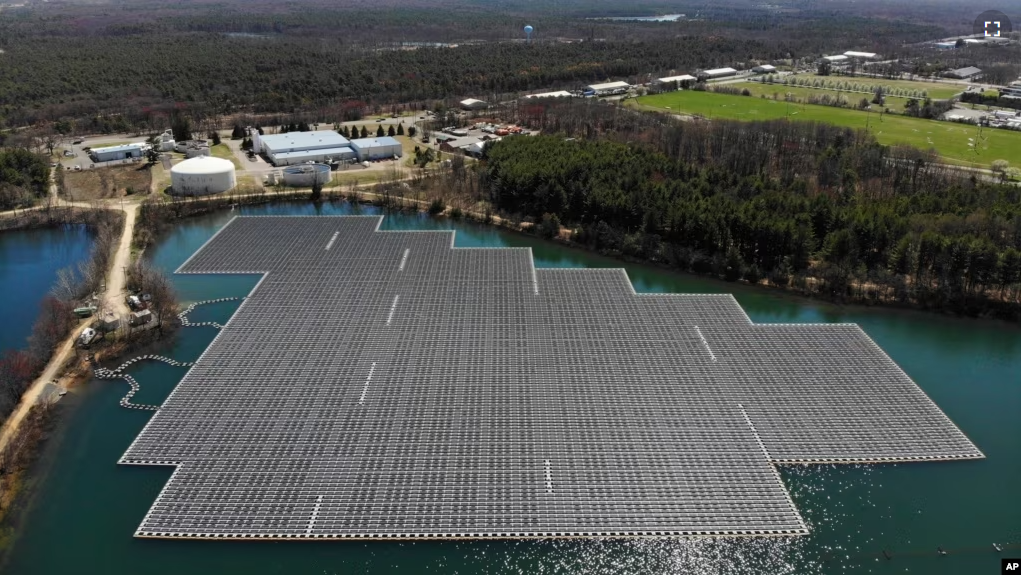Joe Seaman-Graves is the city planner for the small town of Cohoes, New York. He was in search of a less costly way of providing electricity to the town. There was no extra land to build on. But Cohoes does have a nearly 6-hectare water reservoir.
Seaman-Graves looked up the term “floating solar” on Google. He was not familiar with the technology, which has long been a popular way to produce clean energy in Asia.
Seaman-Graves learned that the town’s water reservoir could hold enough solar panels to power all city buildings. And that would save the city more than $500,000 each year.
Floating solar panel projects have seen quick growth as a new form of clean energy in the United States and Asia. Floating solar panes are sought after not just for their clean power, but also because they save water by preventing evaporation.
A recent study that appeared in Nature Sustainability found that more than 6,000 cities in 124 countries could produce all of their electricity demand using floating solar. It also found that the panels could save the cities enough water each year to fill 40 million Olympic-sized swimming pools.
Zhenzhong Zeng is a professor at the Southern University of Science and Technology in Shenzhen, China. He worked on the study. He said American states like Florida, Nevada and California could produce more power with floating solar than they need.
The idea of floating solar is simple: attach panels on structures that float on water. The panels serve as a cover that reduces evaporation to nearly zero. The water keeps the panels cool. This permits them to produce more electricity than land-based panels, which lose efficiency when they get too hot.
One of the floating solar farms in the U.S. is the 4.8-megawatt project in Healdsburg, California. It was built by Ciel & Terre. The company has built 270 projects in 30 countries.

Higher costs at first
Chris Bartle of Ciel & Terre estimated that floating solar costs 10 to 15 percent more than land solar at first. But the technology saves money long term.
Deeper water can increase setup costs, and the technology cannot operate on fast-moving water, on the open ocean or on coastlines with very large waves.
Problems can come up if the solar panels cover too much of a water body’s surface. That could change the water temperature and harm underwater life. Researchers are looking into whether the electromagnetic fields from floating panels could affect underwater ecosystems. However, there is no evidence of that yet.
In Cohoes, public officials are preparing for the setup of their project later this year. The project will cost an estimated $6.5 million.
Seaman-Graves said he believes his town’s floating solar project can serve as an example for other American cities.
“We are an environmental justice community and we see a big opportunity for low to moderate income cities to replicate what we’re doing,” he said.
I’m Ashley Thompson.
Isabella O’Malley reported this story for The Associated Press. Hai Do adapted the story for Learning English.
__________________________________________________________________
Words in This Story
reservoir – n. man-made lake used to store water
solar panel – n. large flat piece of equipment that uses sun’s light or heat to create electricity
professor – n. teacher at college level
ecosystem – n. everything that exists in a particular environment
opportunity – n. chance
replicate – v. repeat or copy
